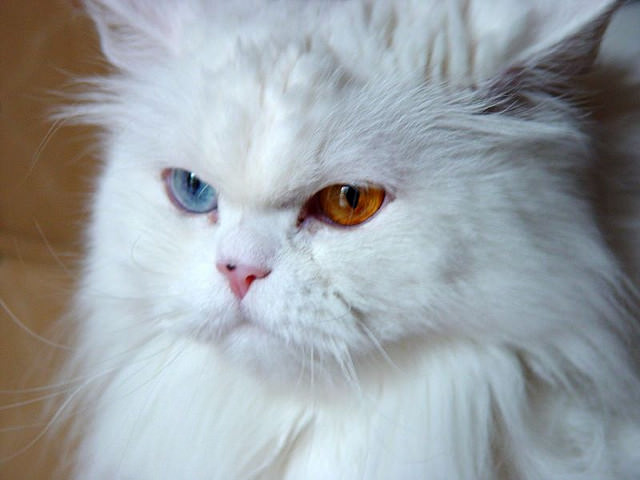It is impossible not to be captivated by a cat that has two different colored eyes. Even more rare is a cat with one eye that has different hues merged together, but this phenomenon does exist! This unique characteristic is known as heterochromia. It is important to note that this condition is not a medical problem and cats with heterochromia do not face any negative effects, including vision impairments.

Fun fact: Heterochromia isn’t just limited to our feline friends, humans can have it too! Some well-known people who have this condition are Dan Aykroyd and Kate Bosworth. Interestingly, David Bowie was often thought to have heterochromia, but it was actually caused by an injury that made one pupil appear darker. There are two types of heterochromia: complete heterochromia, where both eyes are different colors, and sectoral heterochromia, where only one eye has two different colors in the iris.

The terms “complete heterochromia” and “sectoral heterochromia” may sound technical, but they both refer to the condition of heterochromia iridis. This condition means that a cat has eyes with different colors. So how does this unique trait happen in cats? It’s all about genetics, which determine pigmentation. When kittens are born, all of them have blue eyes, but their true eye color only becomes visible between 7-12 weeks of age. During this time, melanin, a pigment, moves into the iris. The amount of melanin that enters the iris determines the eye color, with no melanin resulting in blue eyes.

It’s not uncommon for cats to have different-colored eyes, a condition called heterochromia. This is usually caused by the same genes that can result in all-white or two-colored felines. Some cat breeds, like the Japanese Bobtail, Turkish Angora, and Turkish Van, are more likely to develop heterochromia due to their genetic makeup. But any cat can potentially have this unique feature if they have the right genes.

As cats mature, it is common for them to have one blue eye due to genetic factors that prevent melanin from reaching it. This occurrence is scientifically referred to as complete heterochromia. Interestingly enough, there is another type of heterochromia called sectoral heterochromia, where one iris has varying concentrations of melanin, resulting in a multi-colored eye. It’s truly remarkable, isn’t it?

It can be mesmerizing to witness your kitty’s eyes exhibiting different hues, but it is important to seek veterinary attention if you observe any changes in their eye color as they age. Kittens typically complete their eye color development within the initial 12 weeks of their existence. Any modifications in color beyond that period may hint at complications like inflammation, iron buildup, or blood in your beloved feline’s eyes.